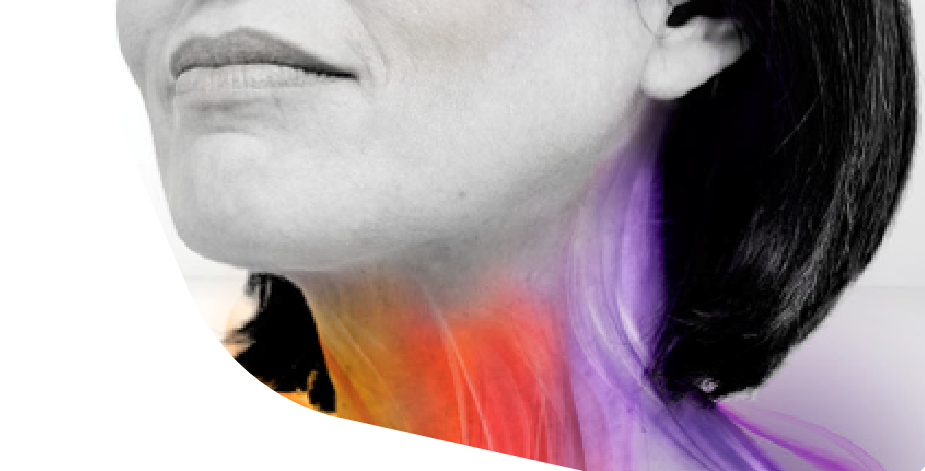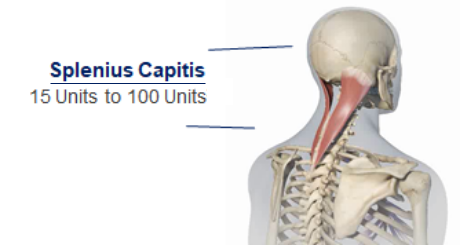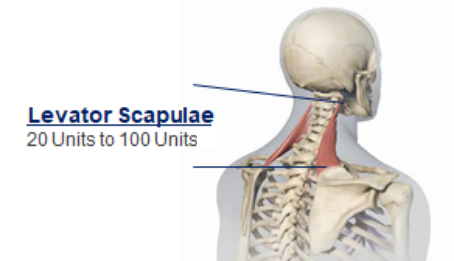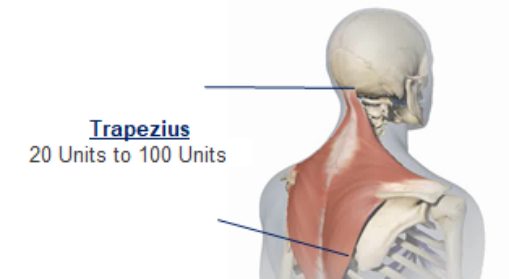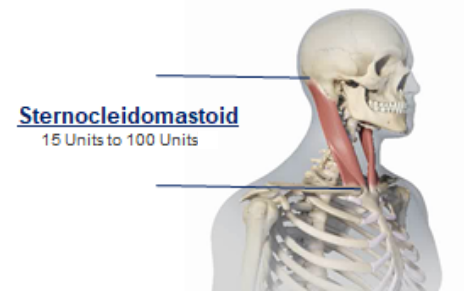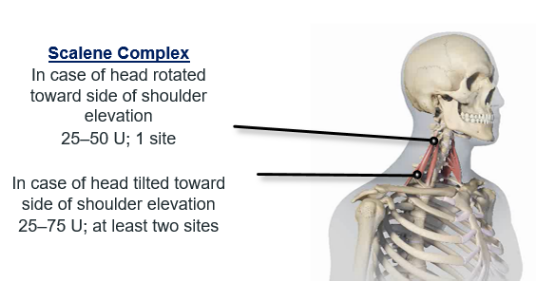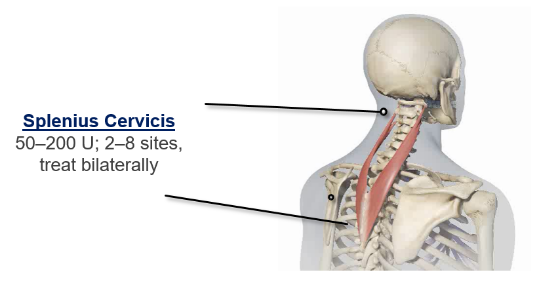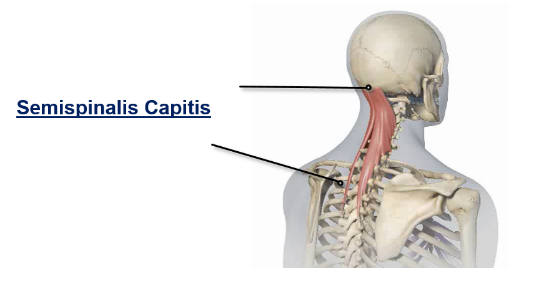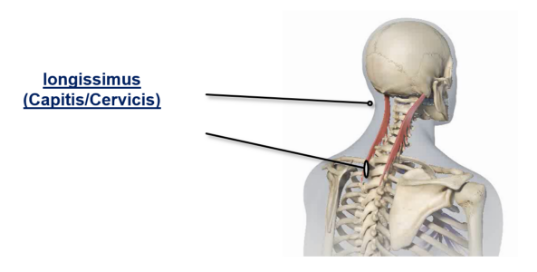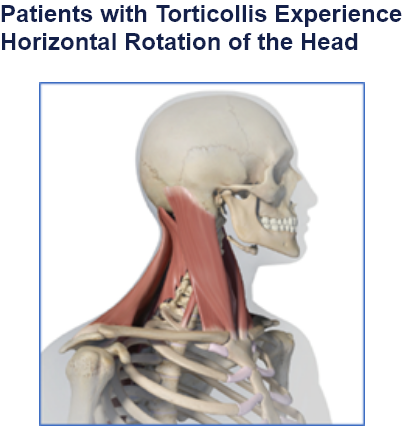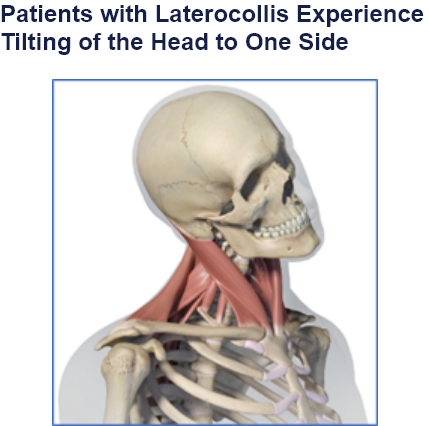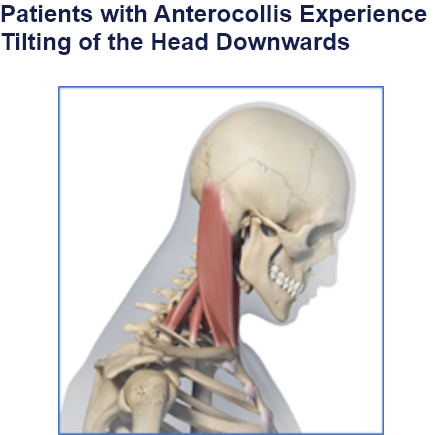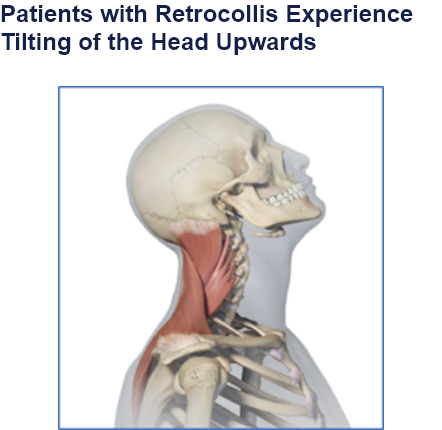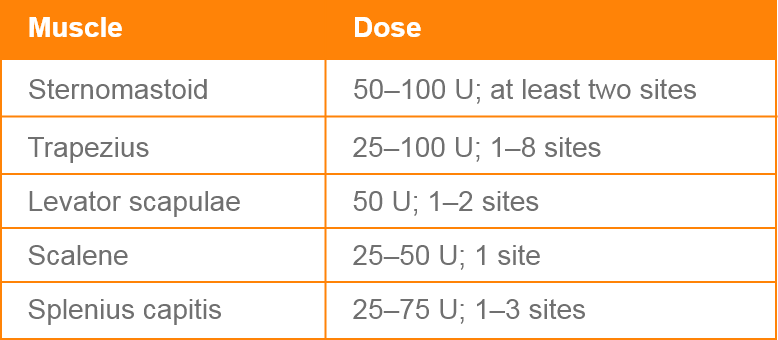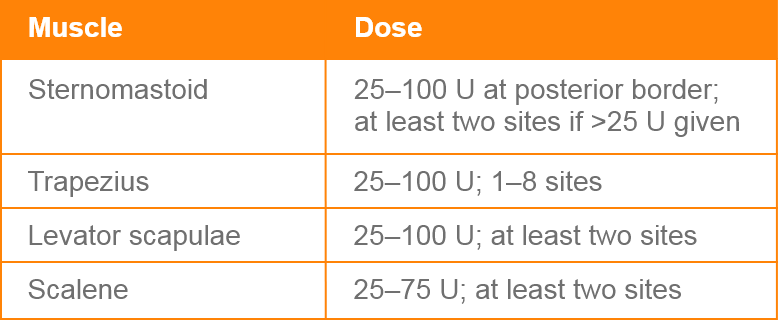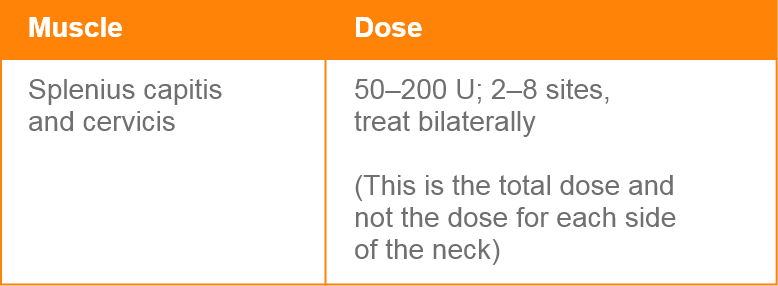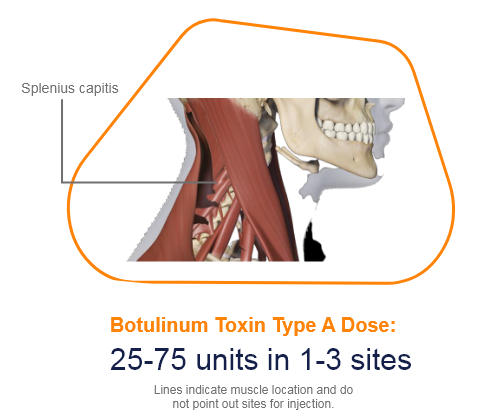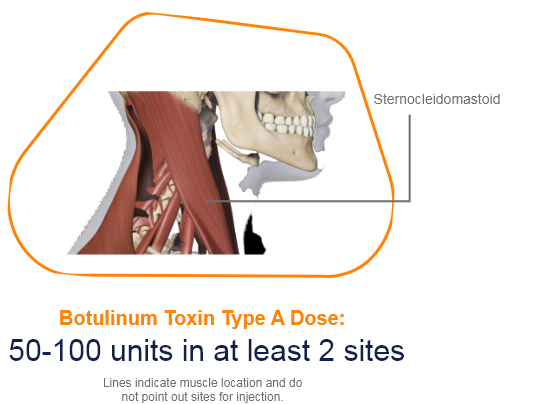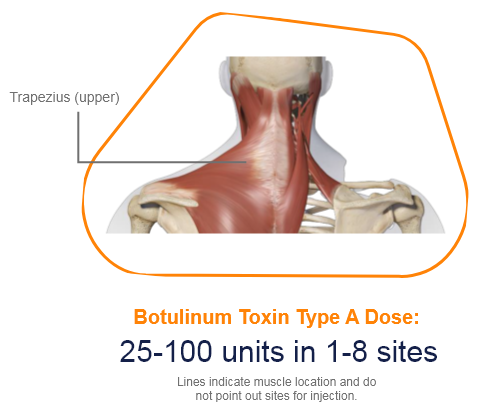Clinical Presentation Pattern and Associated Muscles
Injection Sites
Patterns and Clinical Presentations
Botulinum Toxin Type A Dosing in Cervical Dystonia
Maximum total dose:
A total dose of 300 Units at any one sitting should not be exceeded. The optimal number of injection sites is dependent upon the size of the muscle. Treatment intervals of less than 10 weeks are not recommended.
Type I: Head Rotated Toward Side of Shoulder Elevation
The splenius capitis is a strap-like muscle that, along with the splenius cervicis, comprises the superficial layer of intrinsic back muscles.1
• Function: The muscle flexes and rotates the head and neck to the same side; particularly in the superior and inferior lateral oblique movements.2
• Origin: Begin on the spinous processes of vertebrae from C-7 to T-3 and the ligamentum nuchae.2
• Insertion: The insertion extends from the medial edge of the mastoid process and the lateral part of the superior nuchal line.2
• Innervation: The nerve supply to the splenius capitis is provided by lateral branches of the posterior rami of the middle and lower cervical spinal nerves.2
.
Muscle Function Animation
.
.
Cadaver Demonstration
.
The sternocleidomastoid muscle (SCM) is one of over 20 pairs of muscles acting on the neck. The SCM has dual innervation and multiple functions. It is a superficially palpable muscle with importance as an anatomical landmark within the neck region and as part of neuromuscular pathologies such as torticollis.3
• Function: Lateral flexion, flexion, and rotation of the head on the neck.4
• Origin: Manubrium and medial clavicle4
• Insertion: Mastoid process, and superior nuchal line4
• Innervation: Accessory nerve (CN XI)4
.
Muscle Function Animation
.
.
Cadaver Demonstration
.
The trapezius muscle is a large superficial back muscle that resembles a trapezoid. It extends from the external protuberance of the occipital bone to the lower thoracic vertebrae and laterally to the spine of the scapula.
The trapezius has upper, middle, and lower groups of fibers.5
• Function: Elevation, depression, and retraction of the scapula, rotation of glenoid cavity.6
• Origin: Superior nuchal line, nuchal ligament, occipital protuberance, and spinous processes of C7-T126
• Insertion: Spine of scapula, acromion, and lateral clavicle6
• Innervation: CN XI6
.
Muscle Function Animation
.
.
Cadaver Demonstration
.
The levator scapulae muscles are superficial extrinsic muscles of the back that primarily function to elevate the scapulae.7
• Function: Adduction, medial rotation, and extension of humerus.6
• Origin: Transverse processes of C1 through C4 vertebrae6
• Insertion: Scapula at its medial border6
• Innervation: Thoracodorsal nerve (C5, C6, C7)6
.
Muscle Function Animation
.
.
Cadaver Demonstration
.
References
1. Gaillard, Frank. “Splenius Capitis Muscle: Radiology Reference Article.” Radiopaedia Blog RSS, 2 Aug. 2021. Available at: radiopaedia.org/articles/splenius-capitis-muscle. [Accessed 1 August 2023].
2. Ernest E, Ernest M. (2006) Splenius Capitis Muscle Syndrome. Pract Pain Manag.;6(5).
3. Bordoni, B. and Varacallo, M. (2018). Anatomy, head and neck, sternocleidomastoid muscle.
4. V, Deng F, A A, et al. Sternocleidomastoid muscle. Reference article, Radiopaedia.org (Accessed on 02 Aug 2023) Available from: https://radiopaedia.org/articles/13075
5. Ourieff, J., Scheckel, B. and Agarwal, A. (2018). Anatomy, Back, Trapezius.
6. Javed, O., Maldonado, K.A. and Ashmyan, R. (2022). Anatomy, Shoulder and Upper Limb, Muscles. In StatPearls. StatPearls Publishing.
7. Henry, J.P. and Munakomi, S. (2020). Anatomy, head and neck, levator scapulae muscles.


